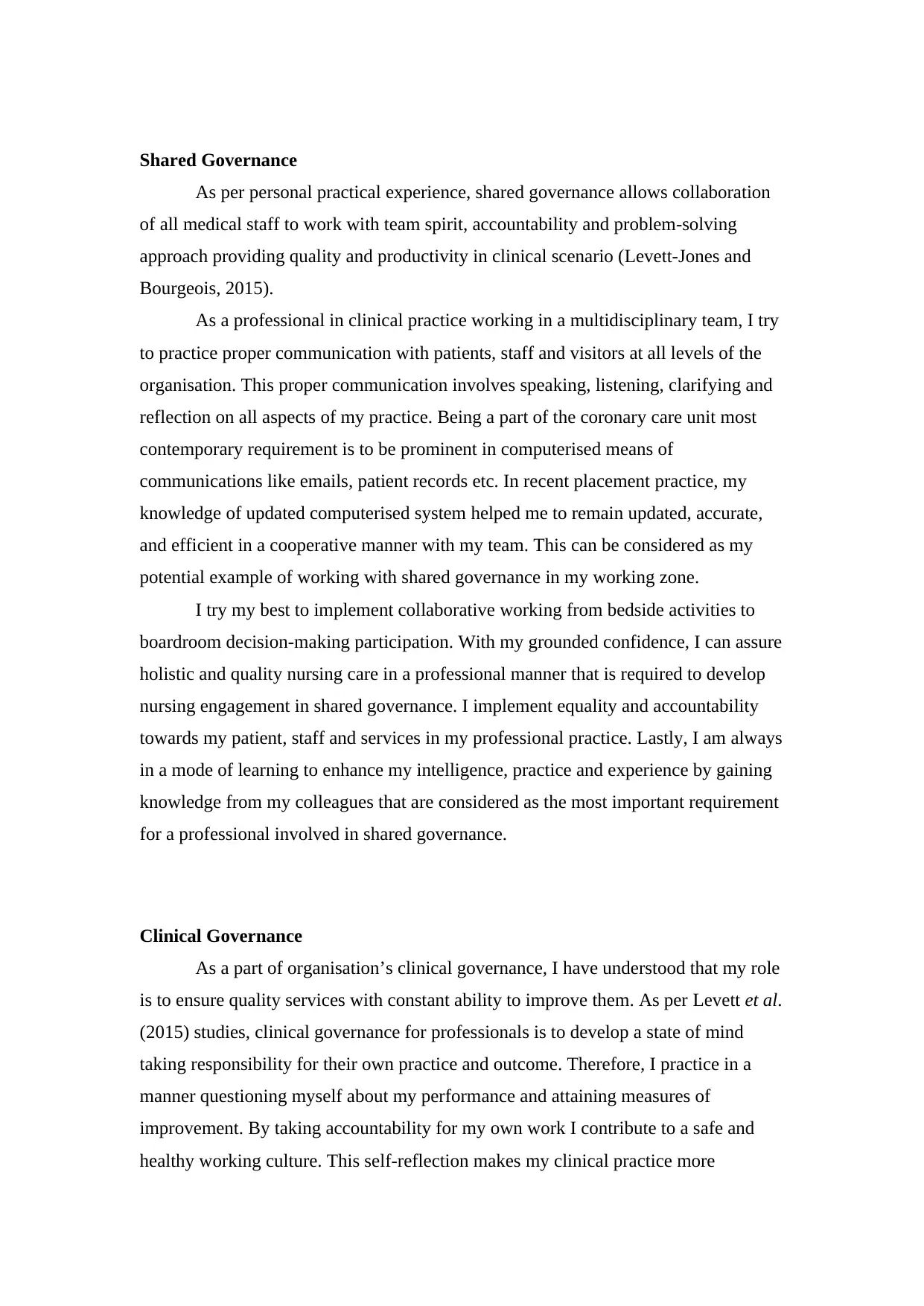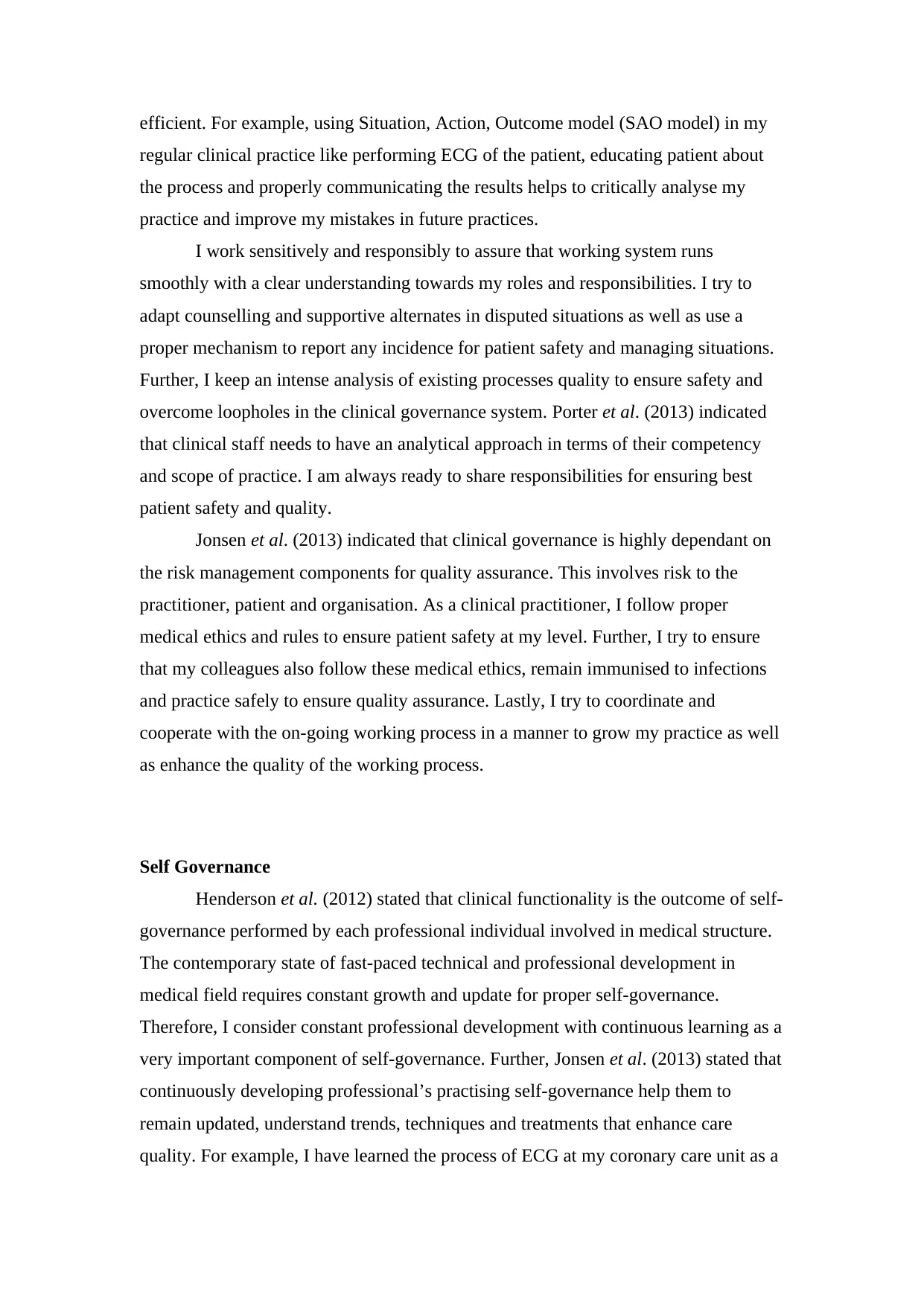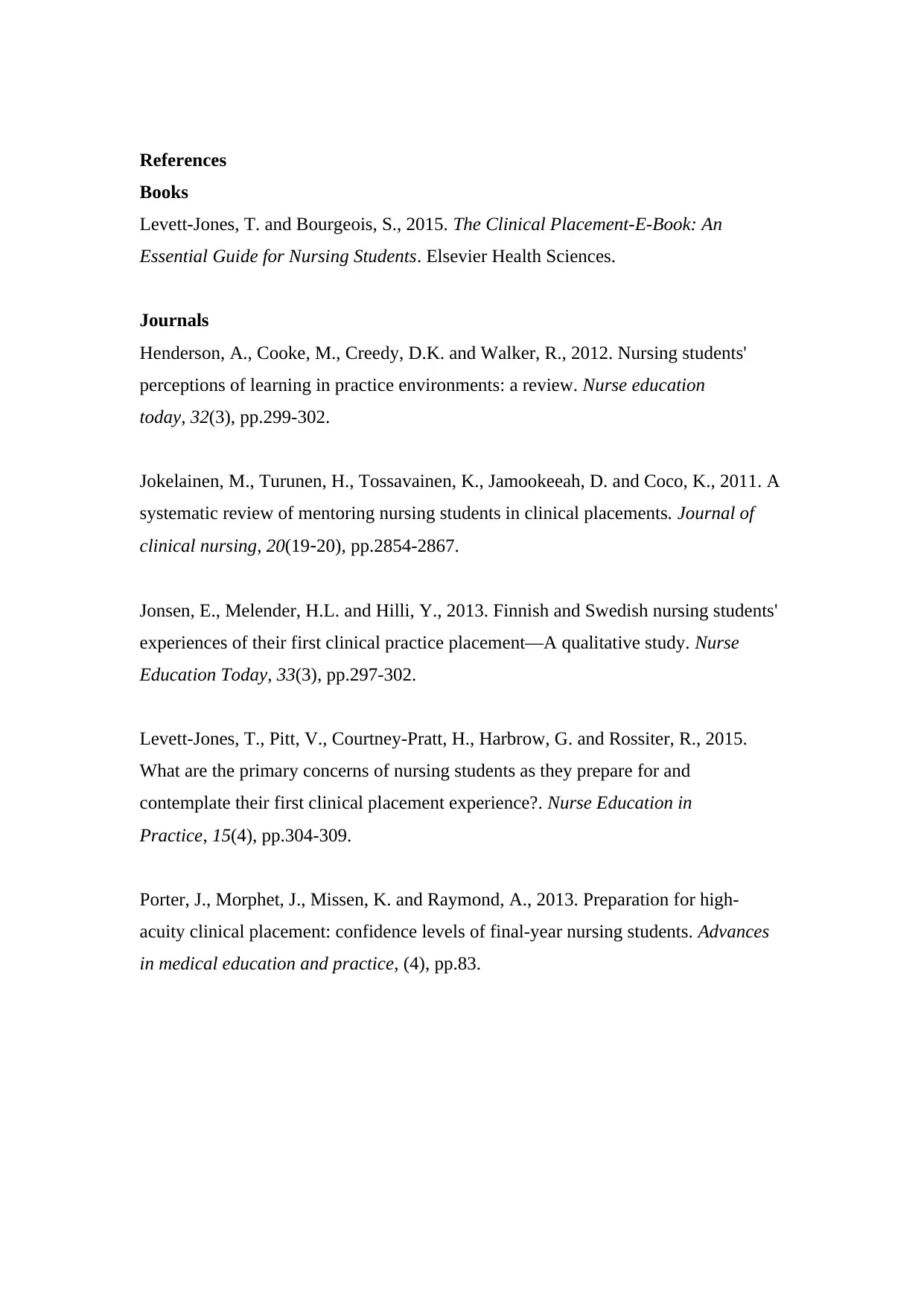Nursing Assignment: Shared, Clinical, and Self Governance Report
VerifiedAdded on 2020/04/15
|5
|1213
|106
Report
AI Summary
This report delves into the critical aspects of nursing governance, encompassing shared, clinical, and self-governance. The assignment begins by exploring shared governance, emphasizing the importance of collaboration, communication, and accountability among healthcare professionals to enhance patient care and productivity. It highlights the author's personal experiences in a multidisciplinary team, showcasing how effective communication and the use of computerized systems contribute to efficient teamwork. The report then examines clinical governance, defining the author's role in ensuring quality service and continuous improvement through self-reflection and the application of models like the SAO model to improve clinical practice and patient safety. The importance of risk management and adherence to medical ethics are also discussed. Finally, the report discusses self-governance, emphasizing continuous professional development and learning as essential components for staying updated with advancements in the medical field. The author shares examples of personal learning experiences and highlights how engagement in regular training and development contributes to positive clinical outcomes and a culture of innovation. The report concludes by emphasizing the importance of committed professional development for positive clinical functionality and encouraging other professionals to understand its significance.
1 out of 5












![[object Object]](/_next/static/media/star-bottom.7253800d.svg)